History of Mobile Phones
In the space of 20 years, smartphones have taken over the world. Billions of people use them every day. But what were the phones that started it all? Let’s take a look back at the history of mobile phones…
A LOT can happen in 40 years. But when it comes to technology, 40-years is like going back to the days of Moses or the Roman Empire. Case in point: the mobile phone –– and, more recently, the rise of mobile internet communications, social networks, and super-fast internet.
The First Cell Phone…
The world’s first mobile phone call was made on April 3, 1973, when Martin Cooper, a senior engineer at Motorola, called a rival telecommunications company and informed them he was speaking via a mobile phone.The phone Cooper used – if you could call it that – weighed a staggering 1.1kg and measured in at 228.6x127x44.4mm. With this prototype device, you got 30 minutes of talk-time and it took around 10 hours to charge.
First Nokia Cell Phone
You can’t really talk about cell phones without mentioning Nokia because, well, without Nokia, we probably wouldn’t have much a phone market today.For instance, in 1996, Nokia’s revenue was around $6.5 billion. Most of it derived from the company’s sole focus: telecommunications. By 2001, Nokia’s revenue had jumped to a staggering $31 billion. Between 2001 and 2012, Nokia was the biggest phone maker on the planet.As for Nokia’s first cell phone, that’d be the Mobira Cityman 900. Released in 1987, the Cityman 900 was developed and released in conjunction with Mobira. The phone weighed 760g and measured in at 183 × 43 × 79 mm – it was a hulking monster.
1989 – MOTOROLA MICROTAC 9800X
The Motorola MicroTAC had a pretty long shelf life; it was first introduced in 1989, but then went through a few changes that moved it from an analog phone to a GDM-compatible handset in 1994.
It was eventually succeeded by Motorola’s StarTAC in 1996, which was one of the first “true” mobile-capable phones ever released.
1992 – MOTOROLA INTERNATIONAL 3200
The Motorola International 3200 was the world’s first digital mobile phone. Like the StarTAC, it was GSM compatible. However, it was never certified, so it could be officially linked to a mobile network.The phone itself, which is still available in some places, as a collector’s item, will actually work on the 900MHz network.
1992 – NOKIA 1011
The Nokia 1011 was the world’s first mass-produced mobile phone. It could store 99 numbers and was originally released in November 1992.Because of the technology inside the phone, the price of the Nokia 1011 was exceptionally high – around €1796 in today’s money! That’s almost as much as the Samsung Galaxy Fold – a phone that folds and has laptop-grade specs! Nokia 1011 was able to send and receive SMS messages, making it the world’s first SMS-capable phone.
1996 – Nokia 8810
The Nokia 8810 was designed to be the most luxurious phone of all time. Nokia pulled out all the stops with this one, adding in the world’s first internal antenna and support for 250 contacts.The 8810 would also connect to early 2G networks, and it was also the phone used by Neo’s crew in the blockbuster film.
1996 – NOKIA 9000 COMMUNICATOR
The Nokia Communicator 9000 is basically the world’s first smartphone, as it ran on an Intel 24 MHz 1386 CPU and also had 8MB of RAM. It was heavy too, and it had a full QWERTY keyboard.It could do email, texts and make calls – three things that hardly any of the competition could manage in the mid-90s.
1998 – NOKIA 9110I
1999 – BlackBerry 850
2000 – Nokia 3310
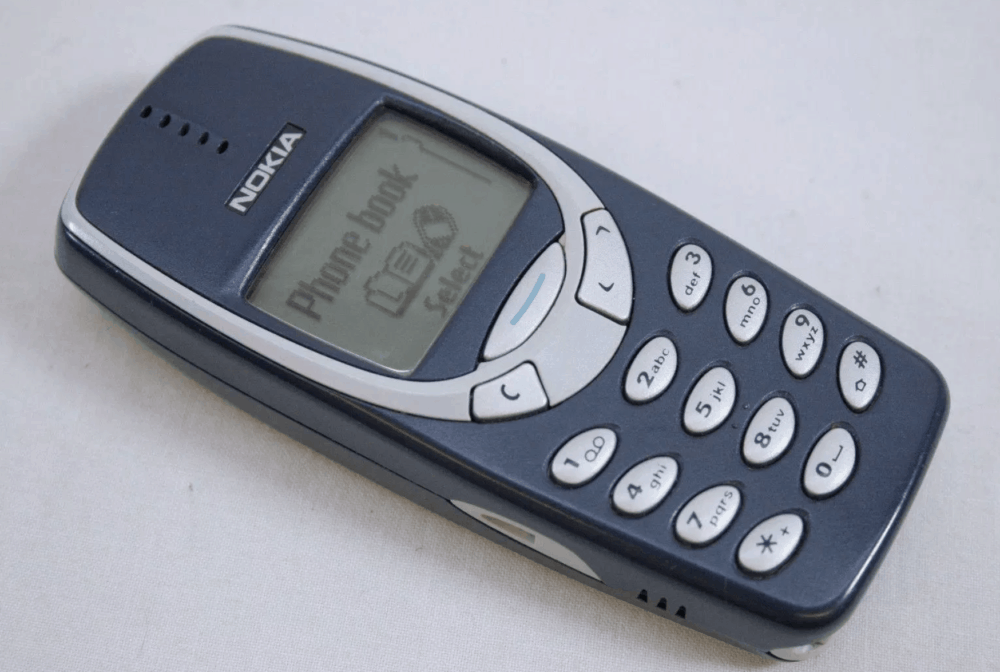
The phone that all of your mates had at school – if you went to school in the mid-to-late-90s, that is. Even in 2013, many regard the 3310 as one of the best mobile devices ever created. Some even say it’s indestructible.
2002 – Samsung SGH-T100
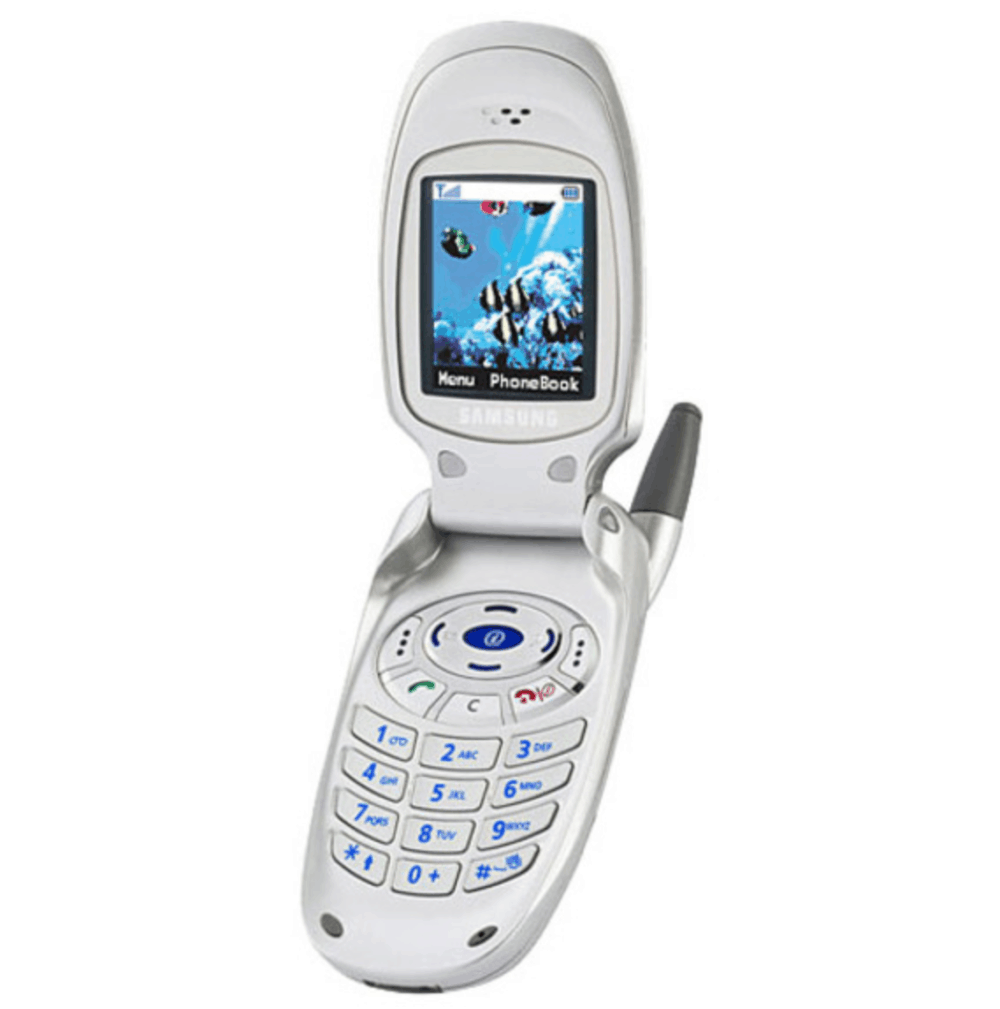
Before Samsung took over the world it made handsets like this, which was the first phone ever to use a thin-film transistor active-matrix LCD display.
2003 – BlackBerry 5810
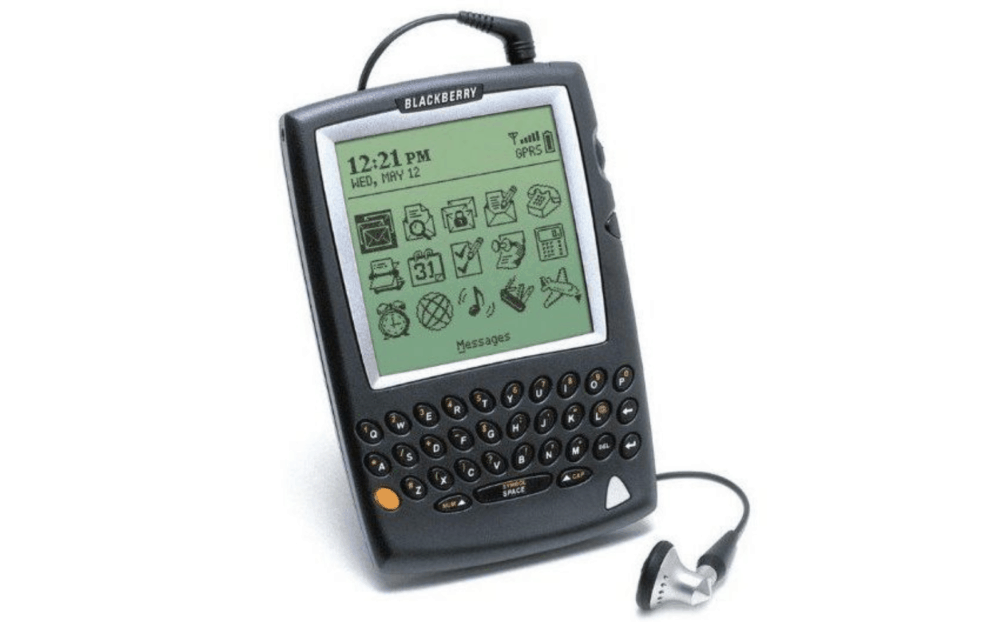
It didn’t have a built-in speaker so you had to plug headphones in to make phone calls, but the BlackBerry 5810 did have email and a QWERTY keyboard.
2003 – NOKIA N-GAGE
The Nokia N-GAGE was the first-ever “gaming phone”. It ran on Symbian and featured a rather unique design, whereby the keys were set out on the side of the display.The phone was designed in an attempt to lure away gamers from Nintendo’s Game Boy Advanced. The handset also included support for apps and also MP3, making it a true smartphone in every sense of the word.
2003 – PALM ONE TREO 600
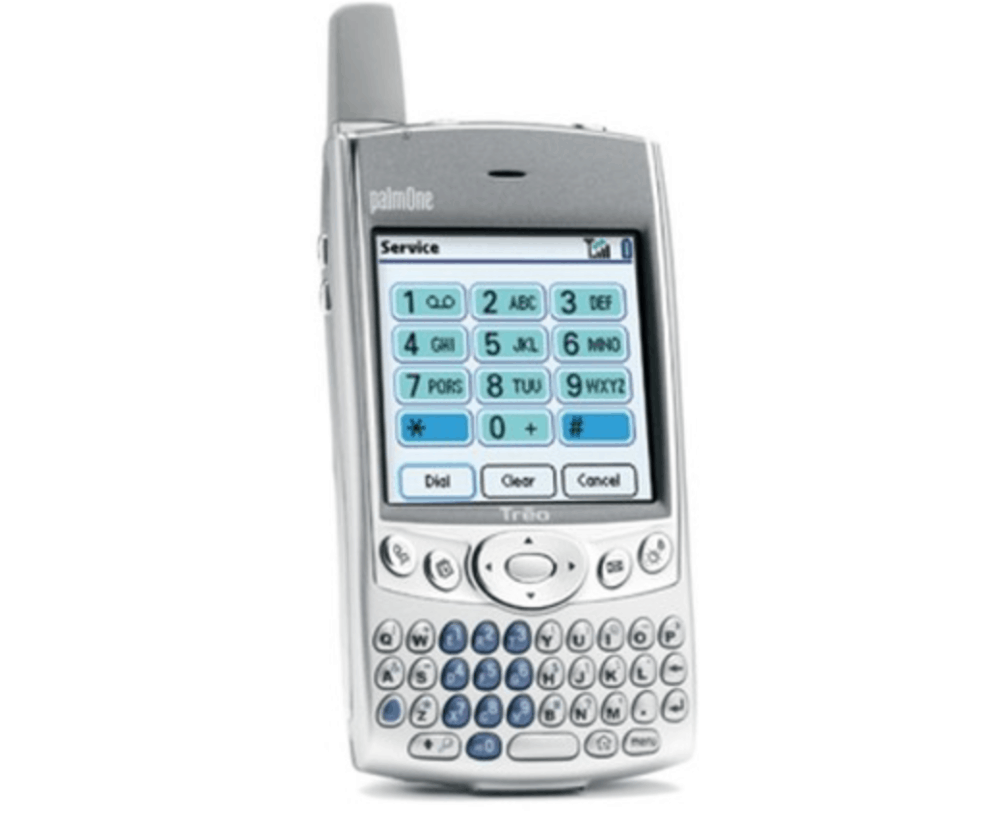
The TREO 600 was probably the world’s first smartphone, as it actually allowed for multi-tasking; you could check the calendar while making a call, for instance.The result of this phone saw the formation of Palm as a company too, following the merger of Handspring and PalmOne into Palm Inc.
2005 – BlackBerry 7270
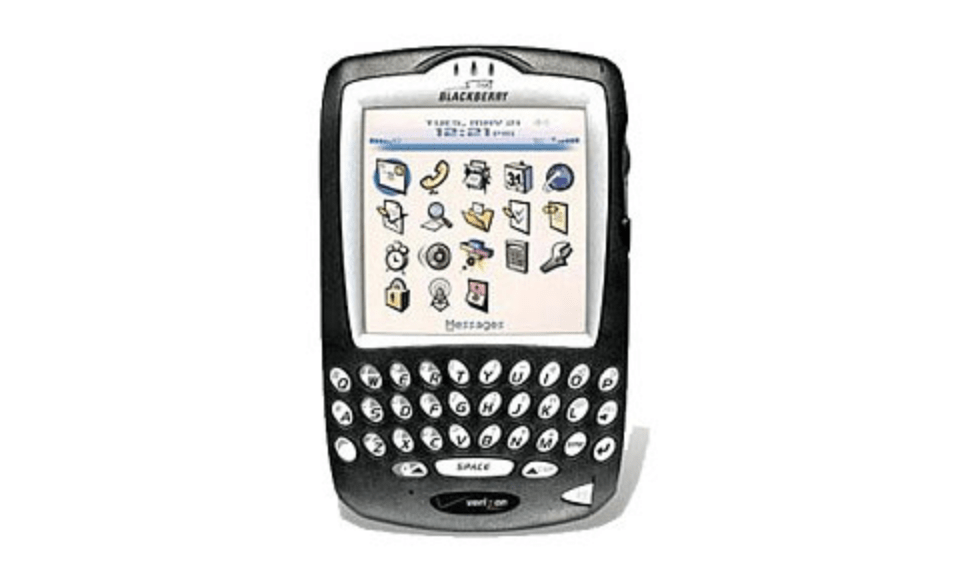
First BlackBerry handset to feature Wi-Fi, and one of the main reasons for widespread CrackBerry addiction.Miss QWERTY phones? Check out the Titan Pocket!
2007 – LG Shine
LG Shine Features:
- Dimensions: 99.8 x 50.6 x 13.8mm
- Weight: 118g
- Operating system: Java MIDP 2.0
- CPU: ARM9 115 MHz
- Memory: 50 MB Internal, microSD (TransFlash) external memory card slot
- Battery: 800mAh Li-Ion
- Display: 240 x 320, 2.2-inch Display 262K-color TFT LCD
- Camera: 2.0 megapixels + Autofocus
2008 – Apple iPhone 3G
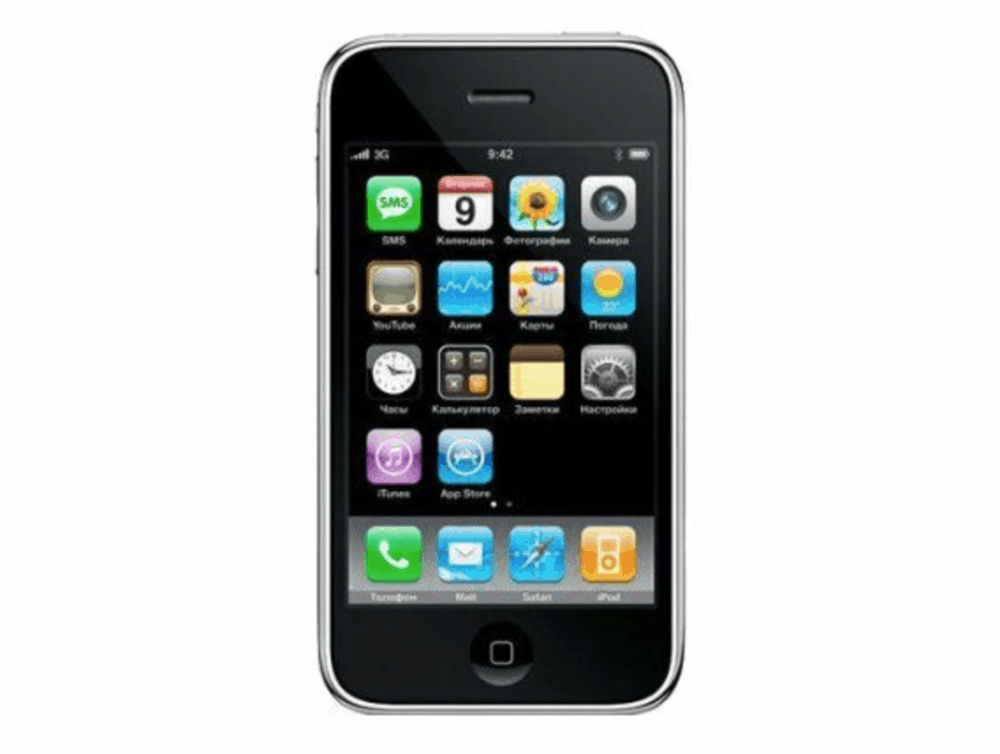
This one needs no introduction and is largely responsible for changing the face of the mobile space forever. Apple’s iPhone popularised applications with millions of consumers, helped make touchscreen interfaces the norm, and broke new ground for overall design and finish.
2010 to 2021: The Android & iPhone Era
A lot of things happened in the phone market during 2010 and 2021. The first and most obvious thing was the rise of Google’s Android platform; it went from a relative newbie in 2009 to the world’s biggest mobile phone operating system by 2013, destroying the previously dominant operating systems in the form of Symbian, BlackBerry, and Windows.Symbian kind of died a death in a relatively short period of time, a death that coincided with the death of Nokia. The two things were related too; Android and iPhones did things differently. People liked how they did things, so more and more people moved away from Symbian.Nokia died. Then came BlackBerry’s slow and painful death. The company’s refusal to adapt to changing market conditions combined with people adjusting to new form factors for phones, as well as things like apps becoming a thing, killed BlackBerry’s market share within the space of a few years.The company held on, pushed new phones out, but as more and more people migrated away from BBM to WhatsApp, and Apple’s iPhone grew in prominence, BlackBerry’s days as a player in the phone space were over. The company’s last-ditch attempt to revive its fortunes was a brand new operating, BlackBerry 10, which fell flat on its face.Onward Mobility now has the BlackBerry license and has claimed it will release the first 5G BlackBerry phone at some point during 2021.We also lost a lot of other brands between 2010 and 2020. HTC died a pretty spectacular death, and so too did LG, one of the longest-standing phone brands in the Android ecosystem. Huawei grew rapidly, almost catching Apple and Samsung, but was eventually knee-capped by the US government, losing nearly all of its market share in the space of 24 months.













